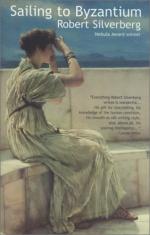|
This section contains 803 words (approx. 3 pages at 300 words per page) |

|
SOURCE: “Yeats's ‘Sailing to Byzantium’,” in The Explicator, Vol. 52, No. 2, Winter, 1994, pp. 93-94.
In the following essay, Steinman submits Shakespeare's King Lear as the origin for the bird imagery in “Sailing to Byzantium.”
In “The Circus Animals' Desertion,” W. B. Yeats asserted that his images “[g]rew in pure mind” (630). But the golden bird of “Sailing to Byzantium” may make us feel that “pure mind,” although compelling, is not sufficient explanation. Where did that singing bird come from? Yeats's creative eclecticism, blending the morning's conversation with philosophical abstractions, makes the notion of one and only one source for any image implausible: see Frank O'Connor's comments on the genesis of “Lapis Lazuli,” for example (211-22). We cannot discard Yeats's note to the poem, “I have read somewhere that in the Emperor's palace at Byzantium was a tree made of gold and silver, and artificial birds that sang” (825), although its...
|
This section contains 803 words (approx. 3 pages at 300 words per page) |

|


